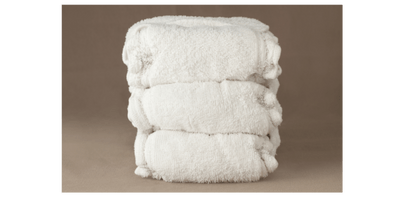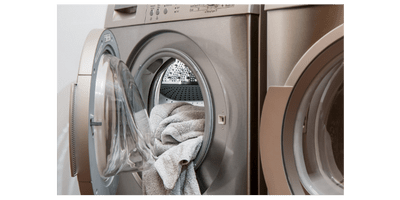If your goal is to use cloth, understanding some of the biggest mistakes people make when using cloth incontinence products can help you avoid the same pitfalls.
1. Assuming you need a diaper
One of the hidden glories of cloth is that there is a wide variety from cloth pads to pull ups to actual diapers to choose from.
Just because you have incontinence, doesn’t mean you’re going to be stuck wearing a diaper. There are a lot of cloth options that look like regular underwear, but have built-in absorbency and leak proof protection.
The key is knowing your flow.
Sorry if that sounds more like a riff on periods. Even though ironically on the whole taboo-to-talk-about scale, incontinence is where periods were 30 years ago. Something that was common, but embarrassing to talk about and so most women didn’t. Taboo topics, secrets, and shame all go hand-in-hand and things just get messy at that point. But if periods can become normalized, incontinence can too. One can always hope.
ANYWAY.
Your flow, ie, the quantity and rate at which leakage occurs, determines which type of product you need. With the exception of nighttime and severe incontinence- both of which require a heavy lifting product – many people can get away with using leak proof incontinence underwear or a pull on type cloth incontinence product to manage their mild to moderate incontinence.
*Note that I did not say period underwear. While those can be useful for light bladder leaks, most are not constructed in such a way that they can manage more moderate incontinence.

2. Buying too many products to start
Going cloth is budget friendly. In the long run. In the short run, it can feel like an expensive gamble.
Still, you have to start somewhere and it can be tempting to just buy a bunch of the same product to start with, especially if they’re on sale. It’s important to resist this, unless you’ve tried the product before and like it. Most places don’t allow for returns and the last thing you want to do is spend a bunch of money on products that won’t work for you.
It’s much better to buy only 2-3 different products to start and try them out for a couple of weeks at home.
This will prevent you from wasting money on products you can’t return. Plus, if you’re on a tight budget, it will allow you to start using cloth without spending a ton of money.
3. Not being willing to experiment
Let’s say you’ve assessed your needs, checked out the available products, picked one you like and actually bought it.
Congratulations, you passed the hardest step, which is getting started!
While this achievement should not be undervalued in any circumstance, it’s important to note that real life may not play out nice and neat. The product you chose may fit and work amazing, but over time you notice that there are some things that could be better.
For example, maybe you realize that side snaps could make getting the darn thing off easier. Or maybe you’d like something with just a little more absorbency at nighttime.
Or maybe you realize that the product you bought is not going to work for you.
Don’t despair! You’ve now entered the refinement stage of your cloth journey. In the refinement stage, you get to experiment and try out different products to find what works best..
“But I’m on a budget!” You say. ”I can’t afford to just buy a bunch of products!”
I get it.
Cloth is a long game and in the short game, it can be expensive. This is why knowing your flow before you start buying is important. Knowing your flow will allow you to purchase a product that will work, even if it’s not quite right.
Experimenting is about finding a product that is perfect for you and your lifestyle.
4. Using standard issue microfiber insert only
Now, let’s say you’ve decided that a nice, standard pocket style diaper is the way you want to go. After all, they’re cheap and easy to find. Some come with a microfiber insert and some don’t.

Regardless, while microfiber is excellent at absorbing quickly, it is NOT excellent at holding onto liquid. This is the biggest reason why compression leaks are so common with pocket style diapers.
There are plenty of options for bamboo and cotton inserts out there. Adding one of these underneath the microfiber insert will help prevent leaks and reduce bulk.

5. Not washing every 2-3 days
When I cloth diapered my son, I never quite managed to master the laundry routine. This was in part because I lived in an apartment complex where the shared machines were down the stairs in the basement. It was also in part because organization with 2 small kids was not my forte.…
This is why routine is important and washing AT LEAST every 2-3 days is imperative for the longevity of your products and the sanity of your nose.
The only exception to this wash rule are products meant to manage light bladder leaks. This is mainly because the concentration of urine is minimal. These items just need a quick rinse after use and can be stored somewhere with plenty of airflow (aka, not buried in the hamper) until laundry day.
It can be tempting to put off washing your cloth incontinence items, but leaving the products wet and soiled will cause the fibers to break down faster. Plus, the longer they sit, the more they’ll smell and urine will become trapped in the fibers, making it harder to get them clean.
Alecia
Latest posts by Alecia (see all)
- How to Make a Cloth Diaper Bigger - August 21, 2023
- Best Swim Diapers for Adults and Youth - July 18, 2023
- Adult Cloth Diaper Hacks: How to Make a Swim Diaper - July 14, 2023


